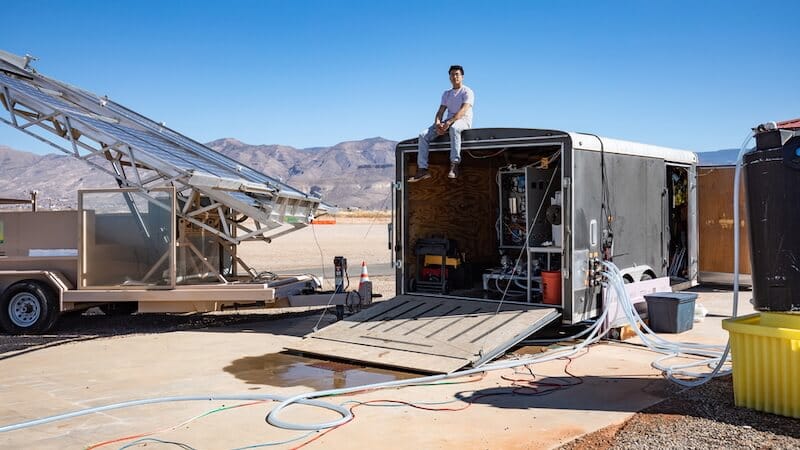
Researchers have developed a solar-powered system for water desalination. The special thing about it: It can turn salt water into drinking water without additional batteries.
Researchers at the Massachusetts Institute of Technology (MIT) have developed a solar system that can convert salt water into drinking water using solar energy. What’s special about it: It doesn’t require batteries. In contrast to many other solar-powered desalination technologies, the system only works with solar energy.
The system should also be able to automatically adapt to changing lighting conditions and reliably desalinate water even when the sun's rays fluctuate. The researchers developed the system with the focus on converting brackish groundwater into drinking water.
Solar-powered water desalination system purifies brackish water cost-effectively
Brackish water is a mixture of salt and fresh water. It is found in many dry regions and often remains unused. In times of increasing water scarcity, it could play an important role as an unused resource. The MIT system makes it possible to purify water cost-effectively and prepare it for human use.
Another advantage is that the system is highly energy efficient: it uses around 94 percent of the solar energy generated directly to treat water. According to the researchers, the solar system is particularly suitable for use in rural and remote regions where conventional technologies are often not practical.
Many of these areas are far from coasts and therefore do not have access to seawater that could be desalinated using conventional processes.
System was already producing 5,000 liters of water per day
Instead, such regions rely on groundwater, which often has too high a salt content. However, thanks to new technology, these areas could also benefit from a sustainable source of drinking water. The system offers a vital alternative, particularly in times of climate change that is increasing the salinity of groundwater sources.
The developers have already successfully tested the technology in field trials and plan to expand it further. In a six-month test run in New Mexico, the system produced up to 5,000 liters of water per day under various weather conditions.
The researchers now want to further develop the technology in order to be able to supply larger communities or entire cities with clean drinking water. Because in regions that are not connected to the power grid, the solar system could make a big difference.
Also interesting:
Source: https://www.basicthinking.de/blog/2024/10/20/solarbetriebenes-system-zur-wasserentsalzung/


